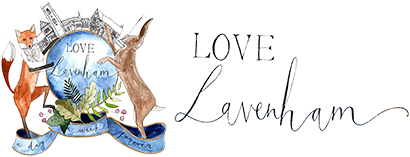The History of Lavenham
Lavenham is noted as one of England’s best preserved Medieval villages with more than three hundred listed buildings to discover and marvel at.
Its Medieval wealth was achieved with hard work, organisation and success of the wool and cloth trade. It is a fascinating place to explore today, strolling along streets which reveal an intriguing story of great wealth to poverty and back again.
WOOL TOWN
The Saxon Manors of Overhall and Netherhall were granted to Alberic De Vere in 11th Century by William the Conqueror and thus Lavenham became a manorial village. It was granted its first Market Charter in 1257 by Henry 111. At this early date Lavenham was already making woollen cloth and the new Charter enabled it to trade with other areas. Merchant clothiers were drawn to the area to organise the workers during the 15th Century and the quality and reputation of Lavenham ‘blew’ broadcloth was soon known far and wide. By 1524 Lavenham was ranked as 14th richest in the country despite its small size. It paid more tax than even the big cities of the time such as Lincoln and York.
Old records then refer to Lavenham as a town and its wealth was flaunted with the construction of magnificent buildings such as the lavish perpendicular gothic style church of St Peter and St Paul with its 141ft tower. The main streets were lined with fine timber framed ‘open hall’ houses.
During the reign of Henry VIII, trade sanctions and heavy taxes due to the Imperial campaigns in France, led to a loss of the country’s export markets. In addition, Dutch refugees in nearby Colchester began weaving lighter, cheaper and more fashionable cloths. The Italian clothiers introduced cottons and silks and soon the manufacture of these finer cloths was taken up by the larger towns and the woollen cloth trade in Lavenham began to fall, although it did continue for a time with the preparation of the woollen yarn for the new manufacturers. Four hundred years of cloth making had come to an end.
What followed was a two hundred year period of impoverishment. Many of the former Merchant’s houses were divided up to provide small homes for large families. The Guildhall building was used as a workhouse. By a twist of fortune it was the extreme poverty and neglect that preserved the Lavenham we can enjoy today. The Market Place, together with Water Street, High Street and Church Street, are still very much on the same scale as they would have been in the 15th century.
There was a period of revival in the early 19th Century when the railway (dismantled 1964) breathed new life into the area, opening it up for trading in coconut matting and horse hair manufacturing.


WAR TIME in LAVENHAM
2018 saw the centenary commemorations of the end of the First World War. Lavenham, alongside villages all over Britain, was honoured to remember its fallen young men.
As a salute to the 76 Lavenham soldiers who gave their lives in the War, a trail map was created by Lienne Nicole, commissioned by the Community Council. The map identifies the homes where those who served departed from.
The Airmen’s Bar in The Swan Hotel has a wall full of signatures of service men which is proudly on show today.
The landscape of Suffolk changed dramatically during the Second World War as 23 airfields were built, and Lavenham became the base for the 487th Bombardment Group of the United States Army Air Force. Flying over 6,000 sorties and dropping more than 14,000 tons of explosives during their missions.
Over 4,800 airmen are known to have served with the squadron, of whom 233 lost their lives. A ‘Welcome Club’ was opened in The Guildhall where, twice a week, the airmen could meet for lectures, live music and dancing. Being an Air Raid Precaution Centre, and air-raid shelter, The Guildhall became a focal point of village life.
The Friends of Lavenham Airfield (FOLA) committee is made up of a number of local volunteers who are passionate about keeping the history of Lavenham airfield and the 487th Bombardment Group, 8th United States Army Air Force alive.


LAVENHAM TODAY
Lavenham’s size and charm means it is again often referred to as a village. The old stands alongside the new as the charming and unique historic buildings blend beautifully with contemporary and stylish accommodation. It is true to say that for Lavenham “in its past lies its present and its future”.


